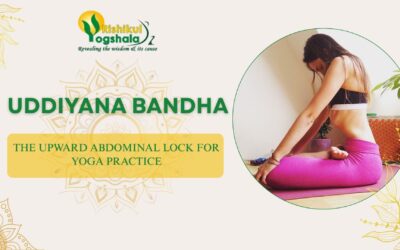Introduction – Dandasana
Yoga has grown to be a multimillion-dollar industry because it can be done by people of all ages, including celebrities, bloggers, housewives, children, and older people. Today, we’ll delve into the calm realm of Dandasana, commonly referred to as the Staff Pose. Dandasana is a fundamental yoga pose that offers various mental and physical advantages. It can improve your general health regardless of your level of experience or inexperience. It is fundamental to the development of strength, flexibility, and mindfulness; thus, practitioners of all skill levels must incorporate it.
In yoga practice, Dandasana displays both depth and simplicity. It’s a simple sitting posture conceals its capacity for transformation. This pose builds a solid foundation by bringing the body, mind, and breath into alignment. While seasoned practitioners utilize Dandasana to enhance their practice and prepare for more complex poses, beginners can use it to understand yoga alignment principles.
We welcome you to clutch the peaceful force of Dandasana and its many benefits as we begin this investigation of it. Dandasana can be your guide whether you’re looking for mental clarity, physical strength, or a closer relationship with yourself. Let’s explore this ageless pose as we continue our yoga journey towards health and development.
Comprehending Dandasana

The Sanskrit terms ‘danda’, which means ‘stick’ or ‘staff’, and ‘asana’, which means ‘pose’ or ‘seat’, are the source of the pose’s name. The name of this asana comes from its seated position in which the body forms a straight line like that of a staff. Even though Dandasana looks easy, it takes careful alignment and the activation of particular muscle groups to perfect.
How To Do Dandasana? (Steps of Doing Dandasana)
The procedure of Dandasana involves sitting with a straight spine, extending the legs forward, flexing the feet, and engaging the core, while maintaining a mindful focus on alignment and breath. Let’s discuss in detail how to perform the procedure of Dandasana mindfully and precisely.”
- Beginning Position: Sit on the floor with your legs straight out in front of you to start. Make sure your hands are flat on the ground and rest beside your hips, with your spine straight.
- Establishing Your Foundation: Firmly plant your heels and thighs in the earth. Sensate the link between the soil beneath your feet and your sitting bones.
- Engage Your Muscles: Flexing your thighs and raising your kneecaps will help you to engage your leg muscles. This trick protects your knees and aids in leg stability.
- Lengthen Your Spine: Take a deep breath and stretch your back. While maintaining a comfortable posture on your shoulders, visualize raising your head towards the ceiling.
Read More – How Chaturanga Dandasana Can Help You Feel More Grounded And Centered?
- Align Your Body: Make sure you don’t lean forward or backward, and that your back stays straight. To support your spine, slightly contract your core muscles.
- Modify Your Foot: You can slightly bend your knees if your hamstrings are tight. The final objective is to flex your feet and legs fully extended.
- Breathing: Throughout the position, keep your breathing steady and uniform. Concentrate on taking deep breaths in and out to relax your body and mind.
- Hold the Pose: As you feel more at ease in the pose, progressively lengthen your time in Dandasana, starting from thirty to one minute.
Benefits of Dandasana (Staff Pose)

Numerous advantages of Dandasana Yoga support mental, emotional, and physical health. The following are some noteworthy Dandasana benefits that can enhance your yoga practice:
- Enhances Posture: This asana improves spinal alignment and posture by strengthening the back and core muscles.
- Hamstring stretches: Dandasana practice regularly helps lengthen and loosen tight hamstrings, which lowers the likelihood of lower back pain.
- Improves Focus: This pose promotes focus and concentration as you stabilize your body and control your breathing.
- Calms the Mind: Dandasana’s meditation element encourages relaxation and lowers tension and anxiety.
- Aids Digestion: This pose’s little abdominal compression stimulates the digestive organs, which helps with digestion and reduces bloating.
- Pelvic Floor Strengthening: This asana works the pelvic floor muscles, which is good for the pelvic floor as a whole.
- Gets Ready for More Complex Pose: Gaining proficiency in this asana is essential for executing numerous sitting and forward-bending yoga poses.
Advice for Novices
- If you’re not familiar with yoga or find Dandasana difficult, the following advice can help you gradually adjust to the pose:
- If you have trouble sitting up straight or have tight hamstrings, place a folded blanket or pillow under your sitting bones.
- Instead of trying to extend your legs fully, concentrate on the alignment of your spine.
- To progressively strengthen the flexibility in your hamstrings, practice mild forward bends such as Paschimottanasana (Seated Forward Bend).
Unlock Personal Growth with the Mindful Practice of Dandasana

Dandasana, commonly known as the Staff Pose in yoga, extends far beyond a physical posture and serves as a portal to inner equilibrium and heightened self-awareness. It would help if you approach this pose with patience and attentiveness, integrating it mindfully into your practice. Each time you engage in Dandasana, observe how your body and mind respond, cherishing the chance for personal growth and transformation that yoga offers. By incorporating this asana into your routine, you can experience notable enhancements in your overall well-being. Embrace the pose’s grace and simplicity, allowing its essence to enrich your existence.
Dandasana embodies more than just a physical exercise; it symbolizes a journey toward inner balance and self-discovery. It’s crucial to approach this pose with patience and mindfulness, fully integrating it into your practice. With each practice of this asana, pay close attention to the reactions of your body and mind, embracing the opportunity for personal development and metamorphosis that yoga uniquely fosters. Regularly incorporating Dandasana into your routine can significantly enhance your overall well-being. Clasp the elegance and simplicity of the Seated Staff Pose, allowing its essence to influence your life’s journey positively.
Conclusion
Moreover, Rishikesh Yogshala is a top choice for Yoga Teacher Training in Rishikesh, and if you’re looking for the perfect setting to practice Dandasana and advance your yoga practice. For those interested in deepening their yoga journey, consider enrolling in a yoga teacher training program. Rishikul Yogshala in Rishikesh offers comprehensive courses like the 200 Hour Yoga TTC in Rishikesh and 300 Hour Yoga TTC in Rishikesh. These programmes are designed to help you master your practice and share the transformative power of yoga with others.
This well-known yoga school, located in the quiet and genuine centre of Rishikesh, India, provides a calm and genuine environment for studying the age-old teachings of yoga. With its knowledgeable instructors, encouraging atmosphere, and immersive programmes, Rishikesh Yogshala offers the ideal setting for honing your Dandasana technique and creating a whole yoga experience. So, if you want to improve your alignment, learn more about yoga philosophy or become fully immersed in the yogic way of life. In that case, Rishikesh Yogshala, the Best Yoga School in Rishikesh, is a sanctuary for all levels of practitioners who want to use yoga to grow and transform.















